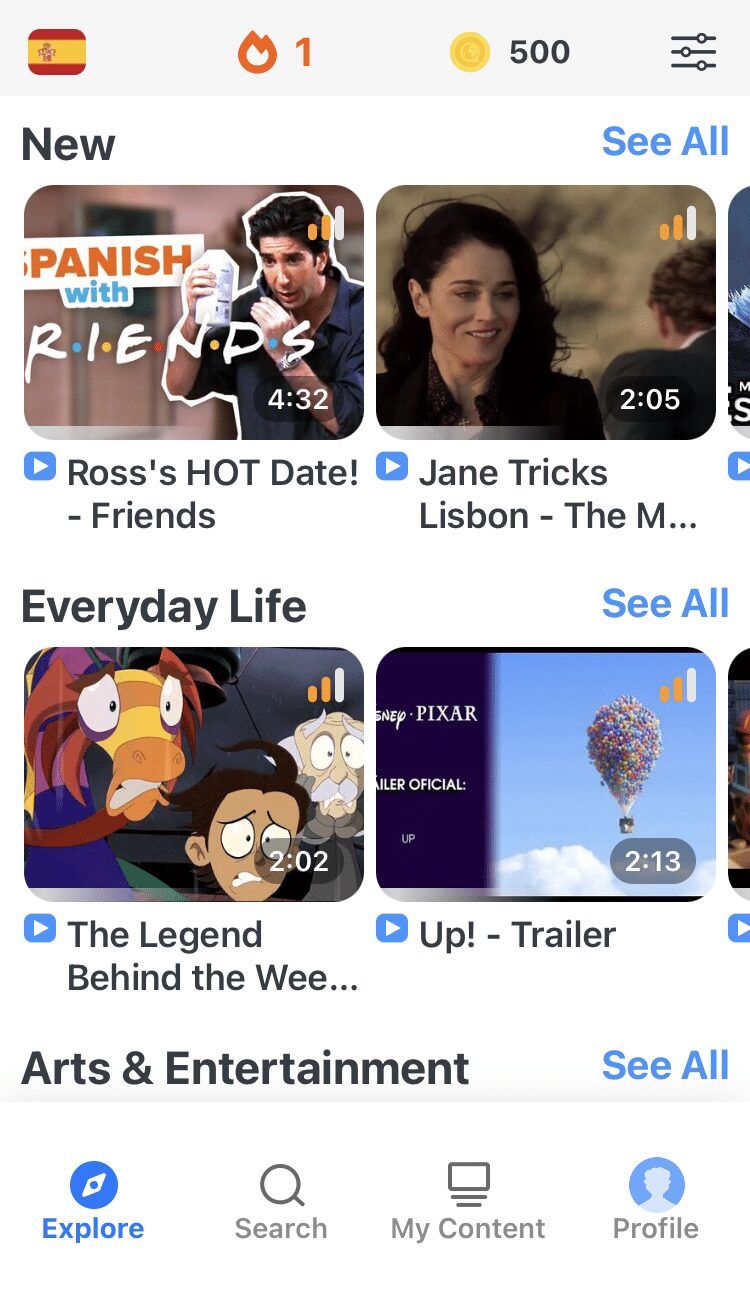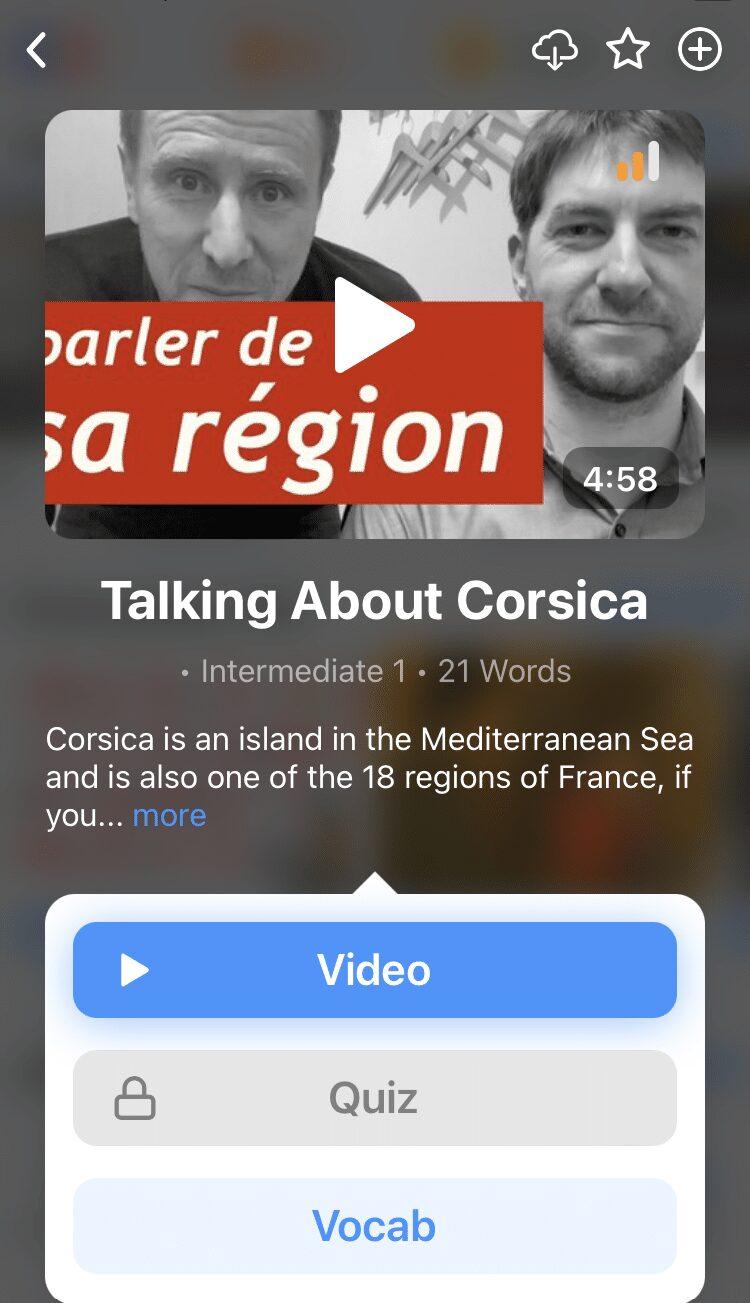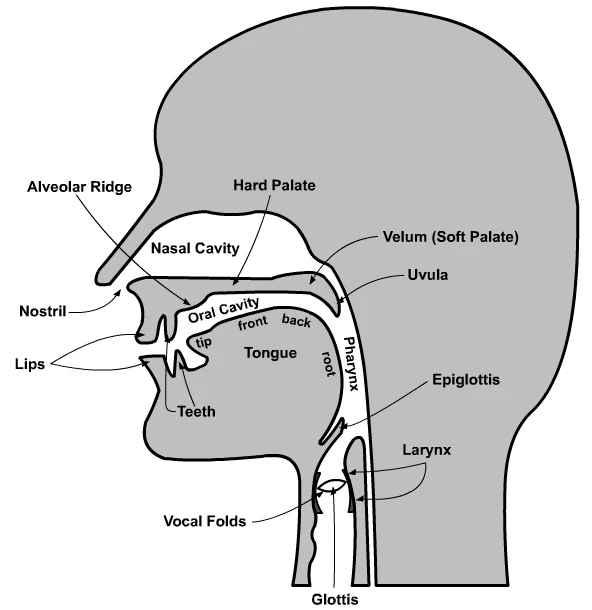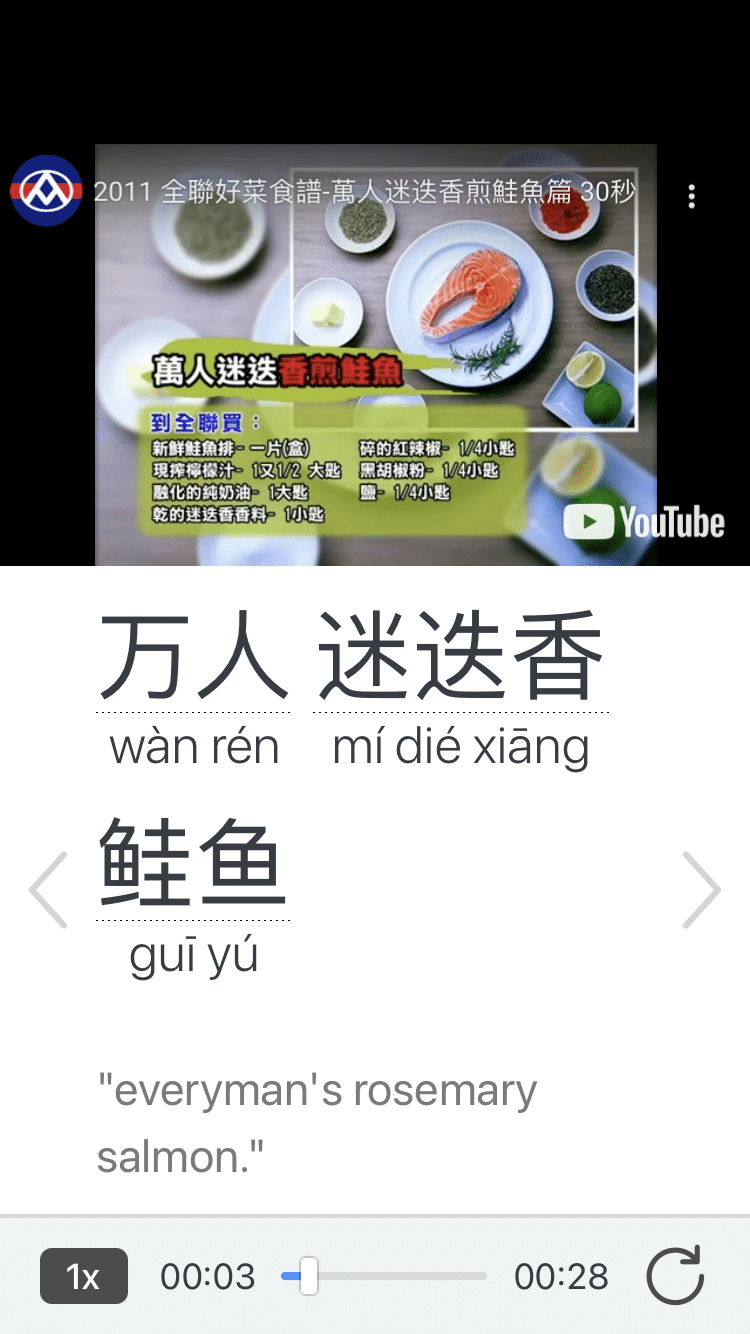How to Roll Your Rs in 3 Steps (with Exercises)

Do you need to learn to roll your Rs for a language you’re studying, but feel like the technique is escaping you? The good news is anyone can roll their Rs, and it’s actually pretty simple.
To roll your Rs, you place the tip of your tongue on the ridge behind your upper front teeth while blowing out air to make it vibrate. But if your native language doesn’t use this language feature, it may feel pretty foreign and uncomfortable for you.
We’ll walk you through a step-by-step guide for producing the rolled R, as well as some practice resources, six exercises and info on how to incorporate this sound into words and conversations.
Download: This blog post is available as a convenient and portable PDF that you can take anywhere. Click here to get a copy. (Download)
The 3-Step Method for How to Roll Your Rs
Step 1: Know the anatomy of rolling your Rs
If you start to research how to roll your Rs, you may see a lot of technical terms:
- Hard palate
- Alveolar ridge
- Velum (soft palate)
- Apical consonant
To produce a rolled R, you’ll basically want to position the tip of your tongue on the alveolar ridge, where it needs to vibrate.
The alveolar ridge is at the very front of the roof of your mouth. It arches up behind your teeth and it might feel a bit bumpy.
When you’ve reached the smooth part of your hard palate, you’ve moved your tongue back too far. You’ll produce a choking, hissing sound if you try pushing air over your tongue when it’s too far back.
The rolled R is an “apical consonant,” meaning that the tip of the tongue blocks the airflow.
But don’t worry too much about the technical names. Sometimes, the best thing you can do is get a mental picture of how everything works together.
The following video is a 2-minute long crash course on the parts of the mouth, head and throat that we use to speak.
While it doesn’t explain the rolled R, it will give you a good grounding in the terminology.
This animated presentation from Glossika Phonics can help you visualize how to position your tongue properly to produce the rolled R.
Step 2: Say “dirt” or “dirk” without the ending letters
To get your tongue into the proper position, you can start by pronouncing an English word like “dirt” or “dirk.”
Once you’ve said the word a few times, begin again—but this time, stop as soon as you’ve pronounced the D. Your tongue will be where it needs to be to pronounce the rolled R.
Your mouth should be slightly open, with your jaw relaxed.
Step 3: Repeat the “D” sound and breathe out heavily
Once your tongue is in place, with the tip pressed against the alveolar ridge, try repeatedly stammering the D sound (“duh-duh-duh-duh-duh-duh-duh”). This will get your tongue relaxed, in the right place and in motion.
Next, take a breath, hold it for a few seconds, then stammer the D sound again as you forcefully expel your breath in a whoosh! of air against your relaxed tongue.
Keep your tongue loose as you use your diaphragm to keep pushing air through your mouth, against your tongue.
Your tongue should start to roll (or make a trilling sound). Sustain the trill or roll for several seconds. (If you’ve ever taken voice lessons or sung in a choir, you’re probably familiar with breathing from your diaphragm as you sing.)
At this point, you should be producing a “motor” or breathy “purring” sound, which is a voiceless sound.
In other words, you’re not speaking or making any sound with your vocal folds/cords while you do it. You’re just letting the air rush out of your mouth, as if you were whispering.
The trick is to start making noise with your vocal cords as if you’re “purring,” resulting in a voiced—and rolled—R.
Rolling your Rs should produce a bit of a tickling sensation in your tongue and on your alveolar ridge.
Can’t get relaxed enough to roll? Daria of Real Russian Club offers many additional tips, including adding motion to your initial stuttering with a cotton swab, plus several tongue stretching and tongue relaxation exercises.
This video from Linguisticator offers another perspective: Think of your tongue as “a flag flapping in the wind” while you practice the rolled R.
Position your tongue correctly in your mouth, let the air flow and let your tongue ride the wind (much like the reed of a woodwind instrument, like a clarinet).
The Raspberry Method for Rolling Your Rs
If the above step-by-step method fails to trill you, you may need to get childish—or, if you’re a Mel Brooks fan, think of the “There’s only one man who would dare give me the raspberry” scene from “Spaceballs.”
Most of us, at one point in our childhood, probably gave other children the “raspberry.” (If we were really cheeky, we may have even done it to an adult!) As you can see, even the very young can make the “raspberry” noise.
If you can give someone the raspberry, you can roll your Rs. The trick is to reverse engineer the process: Start out by making raspberries with your mouth. Your tongue will be vibrating between your upper and lower lips.
While you keep your tongue vibrating, try retracting it into your mouth suddenly, until the vibrating tip of your tongue hits the roof of your mouth, just behind your teeth. Now, just add some voice to it. Voilà!
A word to the wise: Practice this somewhere by yourself. It can get slightly… messy when you quickly pull your raspberry-blowing tongue into your mouth.
Why Can’t I Roll My R’s?
You might be struggling to roll your Rs, but it’s not impossible and anyone on Earth can do it.
But there are three main reasons why you might feel like you can’t right now.
1. The tongue movement is unfamiliar. It can be hard to know exactly how your tongue should move because the rolled R happens completely inside your mouth. This can make it difficult to know how it should feel. The tongue position is very specific.
2. You aren’t controlling and relaxing your muscles. You have to vibrate the tip of your tongue against the roof of your mouth to make the trilled R sound. To do this, you have to relax your tongue muscles. But because the sound and feeling is so new to you, it can be difficult to relax because it doesn’t feel natural to you yet.
3. Your native language doesn’t use the trilled R. Many languages—like English—doesn’t use the rolled R. So the position and vibration you need to produce the sound feels very foreign and weird to you. But just like learning foreign vocabulary, the foreign trilled R movement can be learned and practiced until you master it.
Exercises to Practice Rolling Your Rs
You now know what your mouth has to do to produce the rolled R sound. But knowing how to do something and actually being able to do it are two different things.
Here are six exercises you can do to help you roll your Rs. I recommend doing at least 2-3 of these daily until the sound is easy to make.
Gargle water
Grab a glass of water and then gargle the water, but pay attention to the back of your mouth and your tongue position. Gargling water relaxes these muscles. So after gargling a few times, try to reproduce that same feeling when you try to roll your Rs again.
Repeat “duh” and “tuh”
Pick one of the following sounds: “duh” or “tuh.” Repeat these sounds at least 10 times.
Notice where your tongue goes when you start to pronounce the “d” and “t.” This is where it needs to be when you roll your Rs.
After repeating “duh” or “tuh” 10-15 times, move your tongue as if you’re about to repeat the sound again, but this time replace the D or T with R.
The “butter” exercise
This exercise works if you have an American accent. Say “butter” like you normally would.
Now say it again, but emphasize the “tt”. Now, repeat “butter, butter, butter.” Speed it up with each time you repeat it and soon, you’ll be making the trilled R sound.
Lip trill
Purse up your lips as if you’re about to blow something out. Next, blow air through your lips. This should create a vibrating sound. This exercise doesn’t necessarily produce the rolled R sound, but it gets you used to the feeling of fast airflow—which you need to roll your Rs.
Tongue trill
Put the end of your tongue on the ridge behind your upper front teeth and blow air. Try to vibrate the tip of your tongue against this ridge.
You should then be able to create a sound very similar to the rolled R. As you get more comfortable with it, do it faster and you’ll have the right sound.
Practice with single syllables
Start with simple syllables like “ra,” “re,” “ri,” and “ru.”
Vibrate your tongue to make a “mini rolled R” sound when you pronounce the r in these syllables.
Once you’ve done that, double up the r with words that contain the double rr (the rolled R). In Spanish, these would be words like perro (dog), carro (car) and arriba (up).
Which Languages Use the Rolled R?
The rolled R is used in Italian, Spanish, Polish, Russian, Arabic and (sometimes) Portuguese. It’s also part of Hindi and Tagalog.
That rolled R not only sounds pretty nifty, but it can make a difference in meaning when you’re speaking one of those languages.
For example, in Spanish, it’s the difference between pero (but) and perro (dog).
How to Roll Your Rs in Spanish
This collection of Spanish tongue twisters will help your pronunciation in many areas. This old chestnut is plentiful with rolled double Rs:
Erre con erre cigarro, erre con erre barril. Rápido corren los carros, sobre los rieles del ferrocarril.
(R with R cigar, R with R barrel. Quickly run the carriages on the rails of the railway.)
Like the lyrics of a folk song, the words of tongue twisters can get changed over time, with oral repetition. Here are more variations on the ferrocarril tongue twister:
If you’re looking for a step-by-step guide on how to roll your Rs in Spanish, check out this post.
How to Roll Your Rs in Italian
The tigers roar into this Italian tongue-twister video, along with several other ways to practice your rolled Rs:
The first two tongue twisters in the video are particularly good for rolled R practice:
Trentatre trentini entrarono a Trento tutti e trentatre trotterellando.
(Thirty-three Trentinos entered Trento, all thirty-three trotting.)
Tre tigri contro tre tigri.
(Three tigers against three tigers)
The transcription for all the tongue twisters is displayed below the video.
How to Roll Your Rs in Polish
These two tongue twisters from Marek Radomski’s online Polish dictionary will have your Rs rolling finer than the most delicate chrusciki!
Król Karol kupił królowej Karolinie korale koloru koralowego.
(King Karol bought a coral colored necklace for queen Karoline.)
W Szczebrzeszynie chrząszcz brzmi w trzcinie a Szczebrzeszyn z tego słynie że chrząszcz brzmi w trzcinie.
(In [the town of] Szczebrzeszyn a beetle buzzes in the reed, for which Szczebrzeszyn is famous.)
In this Polish lesson video, Ewelina talks about and demonstrates how Rs are rolled in the Polish language, using lots of common words as examples:
How to Roll Your Rs in Russian
In this video from Antonia Romaker, captioned with both the original Russian and an English translation, you can practice a trio of great Russian rolled R tongue twisters.
You’ll also get some advice from a native speaker on how not to confuse the rolled R with similar sounds:
How to Roll Your Rs in Other Languages
For students of other languages, Robert Beard’s alphaDictionary site boasts an impressive list of tongue twisters in over two dozen languages.
How to Practice Rolling Your RRs
Once you’ve gotten the hang of the rolled R, the only way to master it and use it effortlessly in foreign conversations is to practice, practice, practice!
Immerse yourself in authentic content to absorb the pronunciation
To see the rolled R in action and watch it being pronounced many times, videos are a great tool.Immersion programs such as teach languages (including Spanish, Italian and Russian) with a focus on how they sound in real-life situations. It can help you understand how to roll your Rs when you hear the sound in a lot of contexts.
With FluentU, you hear languages in real-world contexts—the way that native speakers actually use them. Just a quick look will give you an idea of the variety of FluentU videos on offer:

FluentU really takes the grunt work out of learning languages, leaving you with nothing but engaging, effective and efficient learning. It’s already hand-picked the best videos for you and organized them by level and topic. All you have to do is choose any video that strikes your fancy to get started!
Each word in the interactive captions comes with a definition, audio, image, example sentences and more.
Access a complete interactive transcript of every video under the Dialogue tab, and easily review words and phrases from the video under Vocab.
You can use FluentU’s unique adaptive quizzes to learn the vocabulary and phrases from the video through fun questions and exercises. Just swipe left or right to see more examples of the word you're studying.

The program even keeps track of what you’re learning and tells you exactly when it’s time for review, giving you a 100% personalized experience.
Start using the FluentU website on your computer or tablet or, better yet, download the FluentU app from the iTunes or Google Play store. Click here to take advantage of our current sale! (Expires at the end of this month.)
Turn language media into “R” rolling exercises
Method #1: Vibrate your tongue. You may remember some variation of this Rrrrrruffles have Rrrrridges ad, which married the rolled R sound to the peaks and troughs of a popular potato chip.
Method #2: Imitate Catwoman for perfect rolled Rs. Eartha Kitt as Catwoman was a purr-veyor of purr-fect rolled Rs. Unfortunately, this R is a bit too extended for use in most languages.
Method #3 is a drumroll. If you’ve ever made the noise of a drumroll with your mouth, or imitated a revving motor, you’ve essentially made the rolled R.
Practice with tongue twisters
As we saw earlier, tongue twisters are a great way to limber up your tongue, which is key for producing a good rolled R.
Here’s another tongue twister in Spanish that uses rr and r:
FAQs About How to Roll Your Rs
Is rolling your Rs genetic?
No, rolling your Rs is not genetic. Anyone can roll their Rs no matter where they’re from, who their parents are or what their native language is. All it takes is knowing how to and practicing until you’re comfortable with it.
Can Americans roll their Rs?
Some Americans can roll their Rs much easier than others. But many Americans find it difficult because the rolled R isn’t used in English. However, all Americans—just like anyone else—can learn how to roll their Rs just like native speakers of languages that do use it.
Can you still speak Spanish if you can’t roll your R’s?
Yes! You can still speak Spanish and be understood even if you can’t roll your Rs. You won’t sound exactly like a native speaker, but you will be understood just fine as long as your pronunciation of other letters is clear.
If you haven’t mastered the single R in Spanish (the alveolar tap), focus on mastering that first—it’s much more important in Spanish and will make learning the trilled R much easier.
With the help of the resources and tips above, you can learn to roll your Rs. Remember: It’s not just the cat’s meow… it’s child’s play!
And One More Thing...
If you dig the idea of learning on your own time from the comfort of your smart device with real-life authentic language content, you'll love using FluentU.
With FluentU, you'll learn real languages—as they're spoken by native speakers. FluentU has a wide variety of videos as you can see here:
FluentU has interactive captions that let you tap on any word to see an image, definition, audio and useful examples. Now native language content is within reach with interactive transcripts.
Didn't catch something? Go back and listen again. Missed a word? Hover your mouse over the subtitles to instantly view definitions.
You can learn all the vocabulary in any video with FluentU's "learn mode." Swipe left or right to see more examples for the word you’re learning.
And FluentU always keeps track of vocabulary that you’re learning. It gives you extra practice with difficult words—and reminds you when it’s time to review what you’ve learned. You get a truly personalized experience.
Start using the FluentU website on your computer or tablet or, better yet, download the FluentU app from the iTunes or Google Play store. Click here to take advantage of our current sale! (Expires at the end of this month.)








